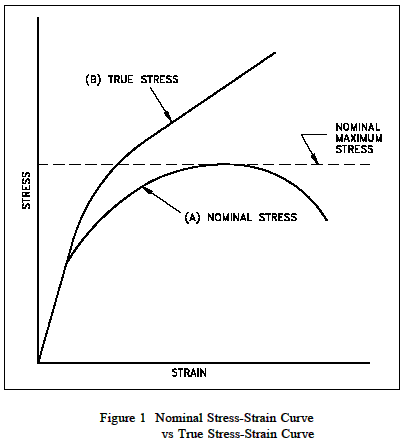| Work ( Strain ) Hardening |
Work
hardening is when a metal is strained beyond the yield point. An
increasing stress is required to produce additional plastic
deformation and the metal apparently becomes stronger and more difficult to deform.
If true
stress is plotted against true strain, the rate of strain hardening
tends to become almost uniform, that is, the curve becomes almost a
straight line, as shown in Figure 1. The gradient of the straight
part of the line is known as the strain hardening coefficient or
work hardening coefficient, and is closely related to the shear
modulus (about proportional). Therefore, a metal with a high shear
modulus will have a high strain or work hardening coefficient (for
example, molybdenum). Grain size will also influence strain
hardening. A material with small grain size will strain harden more
rapidly than the same material with a larger grain size. However,
the effect only applies in the early stages of plastic deformation,
and the influence disappears as the structure deforms and grain
structure breaks down.
Work
hardening is closely related to fatigue. In the example given on
fatigue here at Engineers Edge within the "Fatigue page", bending
the thin steel rod becomes more difficult the farther the rod is
bent. This is the result of work or strain hardening. Work hardening
reduces ductility, which increases the chances of brittle failure.

Work
hardening can also be used to treat material. Prior work hardening
(cold working) causes the treated material to have an apparently
higher yield stress. Therefore, the metal is trengthened.
|